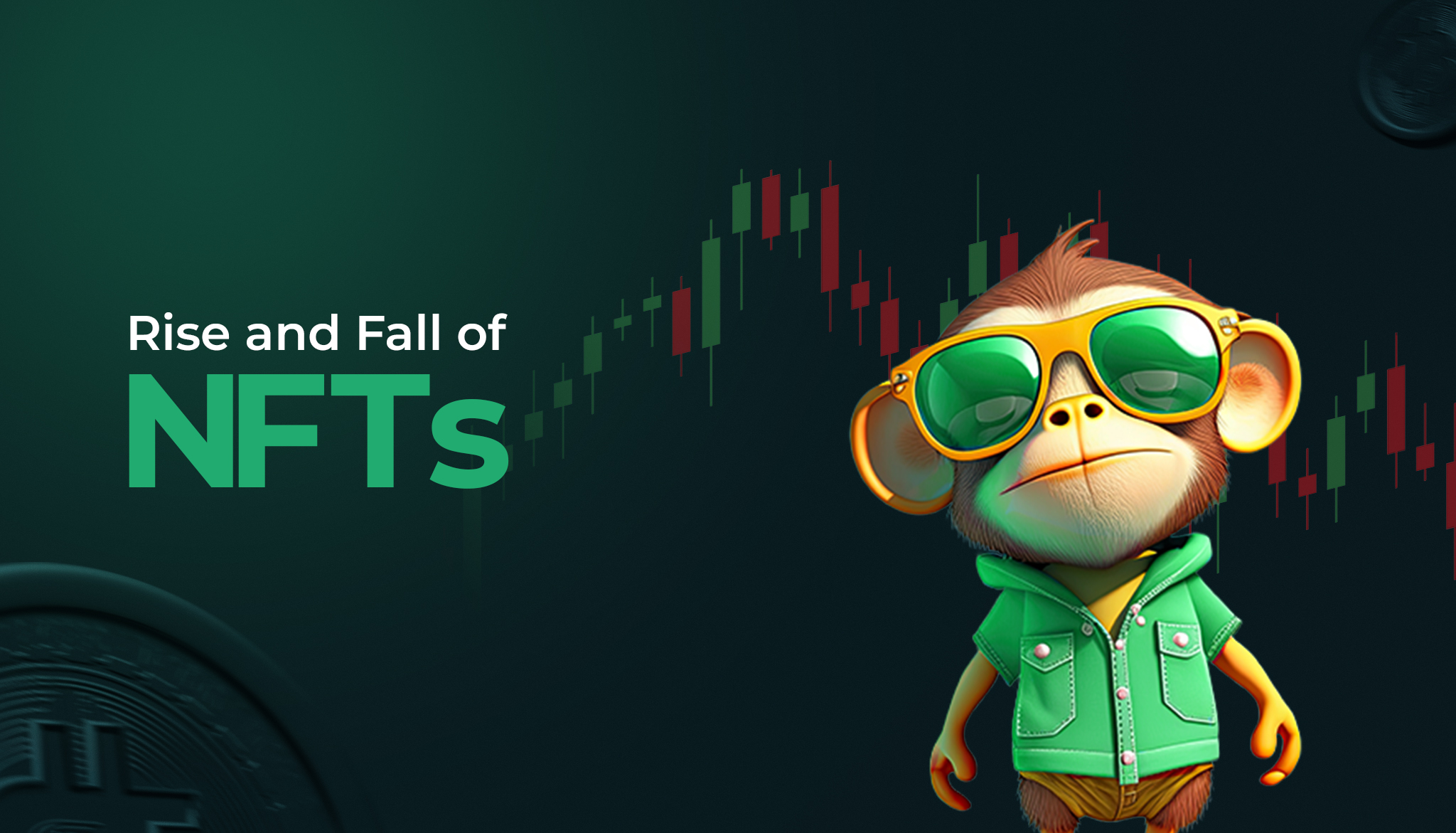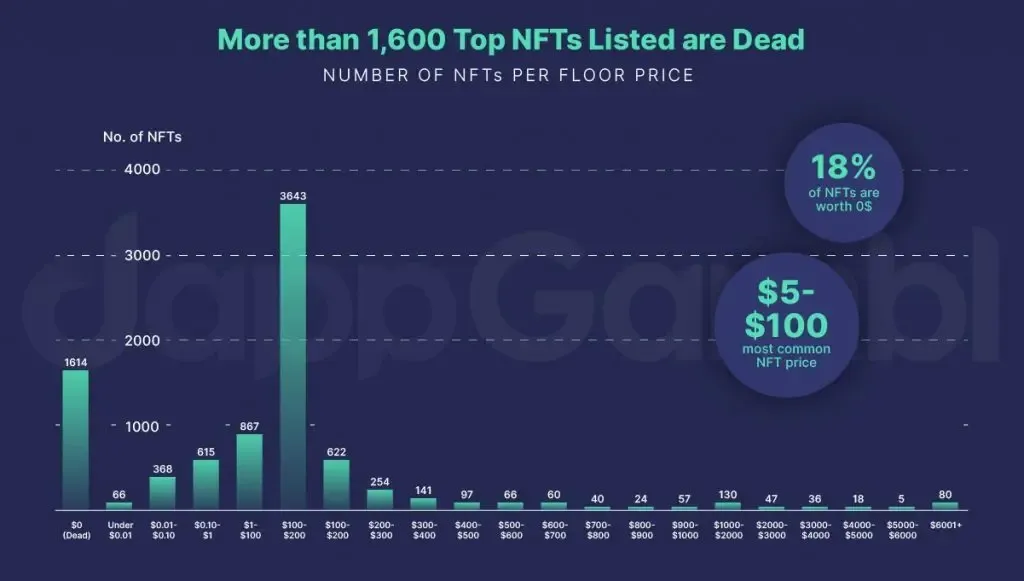Chapter 1: NFTs - A Digital Revolution
What are NFT’s (Non-Fungible Tokens)
At the core, NFTs are special tokens recorded on a blockchain, ensuring their one-of-a-kind nature. Unlike traditional digital files, NFTs cannot be copied or altered, providing an unprecedented level of security.
Blockchain and NFTs
The magic behind NFTs truly shines when paired with blockchain technology. This decentralized ledger not only guarantees the uniqueness of NFTs but also secures an unchangeable record of ownership. It’s the synergy between NFTs and blockchain that laid the foundation for the rise of digital ownership.
The Genesis of NFT
The very first NFT was created, marking a pivotal moment in digital history. ‘Quantum’, was the very first NFT crafted by Kevin McCoy in 2014 on the Namecoin blockchain. It was auctioned through Sotheby’s for $1.47 million, laying the foundation for the NFT revolution.
NFT Marketplace
As NFTs gained popularity, a bustling digital marketplace emerged. Here, artists and collectors joined together, creating a diverse ecosystem for trading digital assets. NFT marketplaces like OpenSea, OKX NFT Marketplace, Element Marketplace, and many more, became vibrant spaces fostering innovation and redefining the way digital creations are valued and exchanged.
The Dawn of NFT Value
In 2021, the point where NFTs and blockchain technologies were gaining more and more popularity, NFTs experienced an incredible surge in value, captivating the attention of investors and enthusiasts alike. The market witnessed remarkable growth, driven by the interest of celebrities, social media influencers, and artists. These and many other factors contributed to the meteoric rise of NFT values, setting the stage for an era of excitement and speculation.
NFTs as Social Currency
Beyond their monetary value, NFTs evolved into a form of social currency. NFTs became a goal that a group of people was working on together, the community was eager to explore blockchain beyond cryptocurrencies. At their peak, NFTs were more than just art and images; at this point they were digital assets worth investing in.
Chapter 2: The Meteoric Rise of NFTs - A Journey through 2021
As we dive deeper into the world of Non-Fungible Tokens (NFTs), we look at the remarkable journey of NFTs during the year 2021. This significant year witnessed the meteoric rise of NFTs, capturing the attention of artists, investors, and enthusiasts alike.
CryptoKitties and Blockchain Success
December 2017 saw the CryptoKitties craze, a blockchain-based game that significantly increased transactions on the Ethereum blockchain. This success of CryptoKitties heightened interest and contributed to the broader acceptance and rise in relevance of NFTs in the market.
Growth of NFTs in 2021
The year 2021 was a defining period for NFTs, marked by unprecedented growth and widespread adoption of blockchain and NFTs. NFTs transformed from a niche interest to a global phenomenon, with the market experiencing an extraordinary surge in value.
$69 Million Milestone
Among the countless NFT transactions, Beeple’s sale of ‘Everyday’ for a staggering $69 million in March 2021 stands out as a milestone. The significance of this high-profile sale catapulted NFTs into mainstream consciousness and contributed to the escalating market value.
NFTs as High-Value Collectibles
With the surge in interest, NFTs began to be perceived as digital assets and high-value collectibles. The market saw an influx of renowned companies like Nike, Gucci, and Tiffany, further cementing the status of NFTs as sought-after items. NFTs transitioned into the realm of luxury and exclusivity.
NFTs in Pop Culture
NFTs spread through popular culture. Renowned figures like Eminem, Madonna, and even entire communities like the Bored Ape Yacht Club joined the NFT movement. This cultural shift transformed digital ownership into a shared identity, redefining creativity and authenticity. Each NFT not only possesses digital value but also becomes a cultural artifact in this evolving era.
The Ballooning Interest
Driven by high-profile sales and celebrity endorsements, interest in NFTs reached unprecedented levels. Speculation soared, fueled by media accounts proclaiming NFTs as the future of digital ownership. These factors contributed to the ballooning interest and the soon-to-follow frenzy in the NFT market.
Chapter 3: The Fall of NFT Value
Challenges Amid Success
Success in the NFT space was a double-edged sword, with its own set of challenges. The huge rush of creators saturated the market, diluting the distinctive appeal of non-fungible tokens (NFTs). The pursuit of quick profits filled the NFT landscape with fraud, Ponzi schemes, and other illicit activities. The very concept of NFTs initially praised for their secure royalties and smart contract automation, found itself facing a crisis of credibility.
NFT Value Decline
The once-busy NFT marketplaces began a slow drop in value. The unpredictable prices of digital art exposed manufacturers to financial concerns, while the market’s oversaturation with low-value items prompted investor concern. The NFT market collapsed as a result of the move from a market governed by a credible valuation system to one governed by the Fear of Missing Out (FOMO).
Factors Contributing to the Downfall
Aside from market saturation and dilution, several factors contributed to the downfall of NFTs. The need for significant use cases outside of digital art limits the utility of these tokens. As the initial rush of excitement wore off, users sought substantial value and real-world applications, revealing a gap in the NFT environment. The optimistic drive that pushed NFTs to record heights has now come under scrutiny, pushing investors to rethink their positions.
Image credit: dappgambl. (The State of the Top NFT Assets in 2023)
NFTs vs. Common Sense
A reality check occurred as the NFT market developed. While NFTs ensured ownership of a unique blockchain record, this secure but limited form of ownership lacked the exclusive copyrights associated with traditional art ownership. The long-term viability of NFTs was questioned by common sense.
Chapter 4: Current state of NFTs
NFTs vs Traditional Art
As the hype died down, a realization emerged as stakeholders grappled with the stark revelation that NFTs offered minimal value over traditional art acquisitions. Dissecting how the allure of NFTs, with their blockchain-backed digital ownership promises, started to pale in comparison to the enduring appeal of conventional art purchases.
Meta’s Announcement:
Meta’s bold decision to stop supporting NFTs within its network in March 2023 marked a dramatic change of events that spread throughout the digital world. This was a turning point that had an impact on the NFT community and beyond. The decision represented a more comprehensive reconsideration of NFTs’ place in the metaverse that Meta envisages than just a simple end to support.
NFTs in the Current State:
As we look at the current state of NFTs, it’s a bit of a mixed bag. A thorough look at 73,257 collections tells us more than 95 percent of them, or 69,795, have lost their value in the global market.
Predictions are rolling in, foreseeing a potential NFT comeback. By 2027, the market might return to a solid $3.2 billion, doubling from the expected $1.6 billion in 2023.
Chapter 5: The Future of NFTs
NFTs in Specific Sectors
Despite the challenges, certain sectors continue to harness the power of NFTs and use them for exclusive access and creator support. NFTs persist in specific spheres, with small communities still supporting them and artists launching new projects.
Beyond the Decline:
While the initial intensity and passion surrounding NFTs have toned down, they still exist in the digital landscape with latent potential. The potential future roles of NFTs be it as coveted collectibles, digital trading cards, or certificates of authenticity for physical and offline digital creations is still unsure as there are still no real use cases for these tokens as of now but in the future, there could be used for them again and these coveted tokens could make a comeback.
Ongoing Security Issues and Government Regulation
The trajectory of NFTs in the future relies on resolving persistent security challenges and adapting to the evolving landscape of government regulations. These hurdles must be overcome for NFTs to carve new niches and regain footing in the dynamic digital realm.
Conclusion
The growth and collapse of NFTs represent the ups and downs of digital age innovation, enthusiasm, and the need for adaptability. NFTs, despite their problems, are not deemed obsolete; rather, they are prepared for possible transformation. The path of NFTs demonstrates the durability of new technologies; it is a journey that is still developing, shaped by innovation and the ever-changing flows of the digital world.


